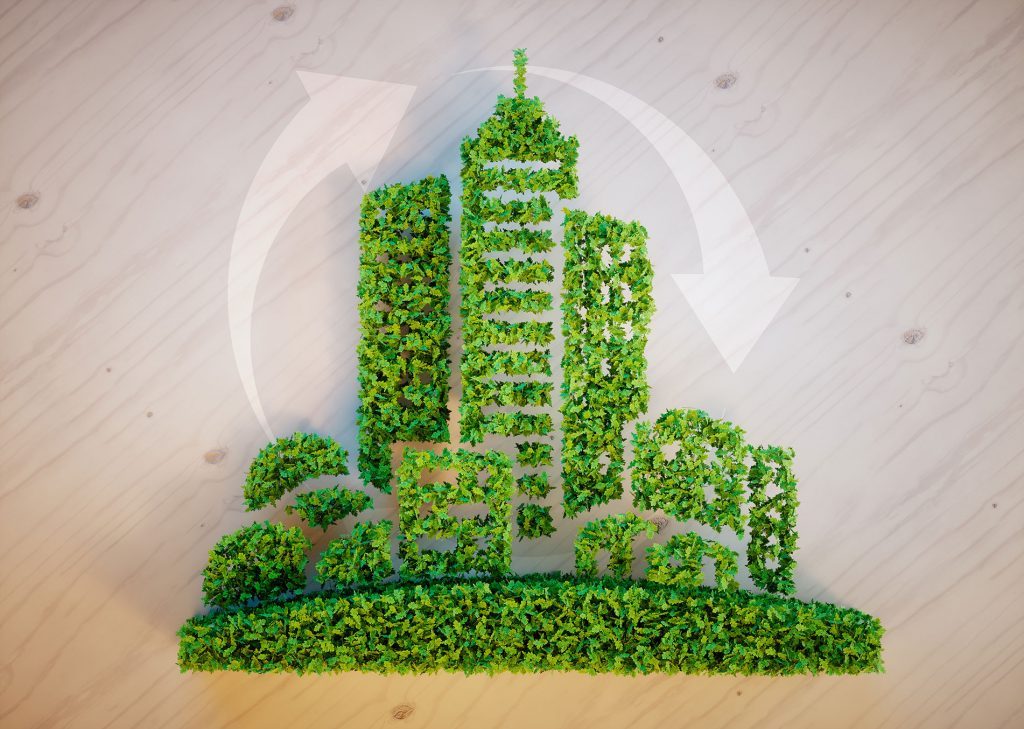Metacities and sustainability: A problem?
Environment in the Metacity context
Industrial discharge and congestion cause blankets of smog covering big cities, whereas huge landfills are evidence of waste logistic problems. It is no secret that heavy air pollution and waste-polluted nutrition affect our health and can have severe consequences for a person’s entire organism. Considering the fact that more than half of the world’s population lives in cities with a rising tendency towards two thirds within the next 30 years, the unhealthy impact of environmental pollution in urban areas is becoming more severe. Besides the issue with air pollution, big cities are also facing other environmental obstacles, including disposal and waste logistics as well as energy supply and consumption. But are these obstacles insurmountable in big cities? – Not really. There are already solutions available that just need to be implemented in order to make even metacities environmentally friendly and liveable.
By giving off tons of emissions every day and polluting our soils and water with toxic waste we are not only affecting the environment but harming our health.
Zero Waste – creation of life circles
Zero Waste stands for the redesign of natural life circles where resources are reused and do not end up as pollutive waste on landfills. Instead of burying or burning valuable materials, they are reused and integrated into the manufacturing of other products. The main benefit of the creation of life circles is the conservation and recovering of resources. Consequently, reusing resources reduces or even eliminates the volume and toxicity of waste.
Creation of life circles

Zero Waste stands for the redesign of natural life circles where resources are reused and do not end up as pollutive waste on landfills. Instead of burying or burning valuable materials, they are reused and integrated into the manufacturing of other products. The main benefit of the creation of life circles is the conservation and recovering of resources. Consequently, reusing resources reduces or even eliminates the volume and toxicity of waste. Additionally, Zero Waste is not only about recycling used materials. Reducing waste also includes avoiding the formation of disposal materials. For that purpose, production processes and distribution systems are restructured since not creating waste in the first place reduces the need to recycle it. Additionally, Zero Waste is not only about recycling used materials. Reducing waste also includes avoiding the formation of disposal materials. For that purpose, production processes and distribution systems are restructured since not creating waste in the first place reduces the need to recycle it.
Zero Emission
Beside avoiding waste, reducing emissions is another goal on the way into a sustainable future. It is not only annoying to get stuck in a traffic jam, but the vehicle’s emissions are also harmful to the health. Concerning the fact that according to live-counter every second a new car is produced, the negative effects of emissions will become more severe for humans as well as for the nature. In 2010 the number of cars worldwide crossed the one billion mark. By 2035 this number will have nearly doubled and according to a study nearly 3 billion cars will be on the street by 2050. This would mean 8 billion tons of carbon dioxide emission per year. Consequently, it is time to rethink our everyday mobility habits in order to protect our and nature’s health. In fact, the ambitious zero emission’s goal is a transportation, production and energy generation without any emission. However, zero emission is difficult to realize since even bikes are not emission-free due to their production process. The same applies to wind energy plants and photovoltaic systems. But by replacing the high-ambitious “zero emission” with “very little emission” the aim becomes more realistic. Concerning transport and mobility, expanding the public transport can help reduce emissions. Additionally, enforcing car sharing and switching to electric vehicles are good solutions to decrease emissions. In order to reduce emissions in the energy production, wind energy plants and photovoltaic systems should replace high-emission coal-fired power plants.
Renewable Energy
The switch from fossil energy sources to renewable ones does not only reduce emissions, it will also be necessary to provide the energy supply in the future since the stocks of oil and coal will be exhausted one day. Even though scientists do not agree on how long these stocks will last, we have to be aware of the fact that all stocks will have been consumed one day.
Palls of smog caused by cars and smoking vents make breathing difficult – why do we not just eliminate them?
Investing in the development and the better use of renewable energy sources will put an end to the dependence on oil and coal. In fact, renewable energy can be produced in various ways using natural forces such as solar and wind power, bioenergy, water and sea power as well as geothermal energy. These various sources of renewable energy enable people to adapt to specific conditions and needs and to use appropriate methods of energy production.
Metacities and Sustainability? – No Problem!
Even though growing cities challenge sustainable methods of day-to-day-life, there are a lot of ways to handle upcoming obstacles in order to make cities more liveable. Natural processes serve as an example of how to carefully deal with resources and create cradle-to-cradle circles where energy and materials are not wasted but reused. Reflecting on and changing some everyday habits will make even big cities liveable and sustainable – without a problem.
The stock of fossil energy sources will once be exhausted – why do we not just use renewable ones?

